Wednesday, August 31, 2005
Interesting blog
Tuesday, August 30, 2005
English is essentially...
Some of the entries in this list of "essentialisms" are funny, some aren't. The equivalent list for Japanese, Chinese etc. is here. This sounded oddly familiar:
I've never been to China but if you substituted "Japanese" for "Chinese" and "hip 50-somethings" for "hip 20-somethings", it might work.
Twenty-six skies
Some of you may know that I have had a silly website for the last year or so which has collected sky pictures from people around the world. They are not just any old sky pictures, there is a strict rule: "Photographs of the sky. Nothing else. Camera angle: 90 degrees to the earth. Straight up. No cheating."
There has been a steady trickle of pictures. The site itself is a bit bonkers and I'm not sure the sane would find it very interesting. However, this is a bit more accessible: a slide show of skies from all over the world. I found it quite beautiful.
There is also a map of where all the images came from. I got another picture sent in today from Cambridge, Massachusetts. Hopefully, I will gradually build up a better slide show. Come to think of it, I might buy one of those old projectors and start "entertaining" my friends with nights in with my slides and bottle or two of Blue Nun. That would be fun, wouldn't it?
Friday, August 26, 2005
Six URLs
This is my attempt. You have to click the URLs in order. I am going to cheat and subtitle it to make it easier to get to grips with, but I am not sure this is necessary:
They are in their fifties and their children have left home.
URL 1
URL 2
URL 3
URL 4
URL 5
URL 6
Or you could do a War and Peace like epic of 1000 URLs! Or maybe I did have a few too many glasses of red wine. While I'm doing whimsy, I liked this.
Thursday, August 25, 2005
The dead cool scrolls

A.'s parents are renovating their house at the moment. As part of the general clear out, A.'s dad was looking through his collection of calligraphy and painting scrolls today and let A. and I have a look. Some of the Japanese scrolls were originals and really quite valuable. I think the one on the left was by Watanabe Kazan and the one on the right by Yamaoka Tesshu.


But what A.'s dad was really enthusiastic about was this impression made from a stone engraved with calligraphy by the Chinese leader Zhou Enlai. A.'s dad bought it on a visit to China in the 1980s and its reappearance in his life seemed to have really made him happy. He spent ages today enthusing to me over the excellence of Zhou Enlai's calligraphy. He pointed to individual characters: "See here, this boat. It has a real impression of movement" and "This mountain somehow really looks like a mountain, doesn't it?"
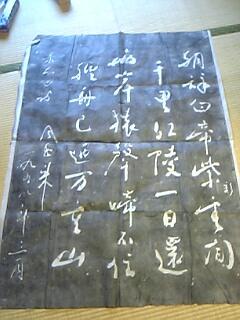
Wednesday, August 24, 2005
More worrying times

Just to show lunacy is not restricted to one side of the political spectrum, how about this disgusting example of degeneracy from Oliver Willis, who boastfully subtitles his site "Like Kryptonite to Stupid"? I think the t-shirt (which bears the slogan "Truman dropped the bomb", if you can't make it out) is designed as a piece of pro-Democrat party propaganda based on the twisted logic that killing more than 200,000 civilians is a tough thing to do and Truman, a Democrat, did it.
Whatever the rights and wrongs of the decisions to bomb Hiroshima and Nagasaki (as well as the almost comparably catastrophic civilian targeted firebombing raids on Japan), it shows remarkable stupidity to deal with such grave and destructive acts in the blithe manner Willis does.
I've thought of a couple of more digusting t-shirt slogans Mr Willis could add to his inventory:


Actually, it is hard to match the extraordinary boorishness of the original. Hats off then to Oliver "Like Manna to Stupid" Willis and a special commemorative t-shirt from someone on his own side of the political spectrum:

Update: Ron Brynaert has a sobering suggestion for Willis.
Tuesday, August 23, 2005
Worrying times
Most of Robertson's argument is incoherent but one part of his meandering and hysteric logic seems particularly odd: "This is in our sphere of influence. We have the Monroe Doctrine, we have other doctrines that we have announced," he announces portentously. Where exactly is not in America's "sphere of influence" nowadays? China, I suppose.
Sunday, August 21, 2005
Psssht, glug, aaaah!

Saturday, August 20, 2005
Comfort women museum
The Drunk Philosopher's Stone, AKA the Brita Water Filter
Thursday, August 18, 2005
More surprisingness of Japanese breads
Episode 1 - we discover an extraordinary underworld of surprising breads in this new land.
Episode 2 - we discover an extensive literature devoted to said surprising breads.
Bread, the final frontier. These are the voyages of the Japanese breadmakers.
Their mission: to explore strange new worlds. To seek out new flours
and new fillings. To boldly go where no baker has gone before....
Guest appearances by:
Ham and cheese naan bread
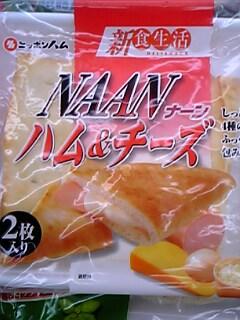
Cheese and curry naan bread
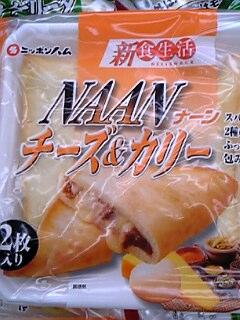
Scene 1
Three Japanese bakers sprint from stage left pursued by enraged Indian chefs...
Captain Otera: "We've got the secret formula! Get us out of here! Beam me up Hokkaidoey!"......
Monday, August 15, 2005
War guilt

There was a fascinating account on Japan's Kyodo newswire at the end of last week of a visit by a group of British school children to Japan to commemorate the end of the war. The children laid wreaths at the memorial of the Mitsushima camp in Nagano Prefecture, where 60 allied POWs died, and commemorated the deaths of hundreds of thousands of Japanese people in the atomic bombings.
Not exactly the most spellbinding of events, you might say. Such wreath layings are commonplace. However, what was interesting was a description of some goings on at the ceremony tucked away at the bottom of the article.
"After hearing many views on the war along the way, the students encountered a tense moment in Tenryu, when Takashi Nagase, 87, a former military police interpreter for the Imperial Japanese Army, tried to force local Japanese youth to apologize to the British students for the abuse that the Japanese soldiers had inflicted on the POWs.I have been thinking a lot over the past week or so about the vexed issue of Japan's war guilt, or rather its alleged lack of it. Articles about Japan's inability to acknowledge its past have become a staple of the Western media. My gut feeling when reading these accounts has always been that you have to be very careful when approaching the topic.
Nagase, a native of Okayama Prefecture, traveled to the village to speak about his own experience of helping interrogate POWs on the site of the Thailand-Burma Railway before the students. He tearfully apologized to them.
When Nagase told the Japanese youth to apologize as well, a 20-year-old man resisted, saying, ''This is not the problem of our generation.''
Jonathan Wild, 17, a Cheney student, cut in shortly after, saying, ''I don't think apologizing is what we should do. We just need to remember...and know we will not do it again.''
Wild said later that apologies ''can make people feel better but they don't solve problems all the time.''
''Mr. Nagase feels apologies are very important but that's for him and not for us. Our side of the war did terrific things as well...But I don't apologize,'' he said.
The first rider is that it is hardly unusual for countries to ignore uncomfortable facts about their past. To what extent does the average American acknowledge that their nation was built on a genocide? I remember a visit by the Queen (of England. I am English) to India some years ago. At one stage she was bombarded with demands from some Indian political groups for an apology for British imperial rule. The most common reaction among my British friends was bemusement because a lack of familiarity with what on earth we had to be sorry for and a general feeling that it was a long time ago. The Japanese left Asia in 1945. The British left India in 1947, a year in which hundreds of thousands of people died in the Partition. Many of the atrocities committed by the Japanese in Asia are of a fundamentally different sort to the British blundering that was partially responsible for the Partition, but there are other episodes in British imperial history that are more comparable. Is your average British person properly aware of the horrors of the slave trade and the extent to which British economic power is built on it? Are the atrocities against the Aborigines in Australia an issue on which there has been much reflection?
It is also necessary to look closely at the impetus behind the current focus on Japan's war guilt. Much of this has come from protests from mainland Asia. These countries have good reason to be interested in a lack of contrition in Japan but it is worth bearing in mind that the Chinese government's recent pronouncements, in particular, have appeared to coincide with a rearguard action to preserve China's status as the only Asian Security Council member. We should also ask whether the kind of violent protests we have seen in China in recent years would have been permitted in any other cause. There is a suspicion that anti-Japanese feeling is being used by the authoritarian regime there as a lightining rod for popular currents in the country, a development that has a distinctly Fascist smell to it. Across Asia, anti-Japanese sentiment can sometimes seem very strident, even racist, and does sometimes seem to have more to do with domestic nationalist politics than a genuine concern with the real situation in Japan.
Is there a problem with Japan's acknowledgement of its wartime past? I think there may be but I think it is best understood by looking at the detail. It is certainly not the case that all Japanese people are a bunch of screaming holocaust deniers. It seems it has become almost compulsory in the Western media coverage of this issue to combine reports with images of strange looking fellows at the Yasukuni shrine, the national war memorial, dressed in military garb and carrying Japanese flags [1, 2]. What is not always made clear is that these people are extremists with a tiny constituency. I was in Tokyo yesterday and came across a group of these black van rightists screaming their denials and war apologies at the crowd waiting for the lights to change at one of the city''s main intersections. I stood directly infront of the van and took a photo of the audience.

As you can see, there was not exactly rapt attention. These people are seen as nutters here and are usually ignored. There is a general sense in Japan that the war was a bad thing and a grudging if quiet acknowledgement very bad things were done in Asia. It is this climate that has made it politically possible for the Japanese government to officially apologise on 18 separate occasions for its wartime aggression.
However, what is not very much in evidence among Japanese people is a great mastery of the hard facts of what exactly was done in Asia, where it was done and how it was done. While the average Brit may not know the intimate details of the slave trade, most Germans by now do have an intimate understanding of the detail of the Holocaust: not only the fact that millions of Jewish people were slaughtered, but where they were killed, how they died and the precise technologies that were used. I feel that many Japanese people are not aware of the specifics of the Nanjing massacre , Unit 731 or the other atrocities in Asia. While the receiving line at Auschwitz has been burned into the German psyche, the bayonet drills at Nanjing are unfamiliar here. I was surprised to find that Japanese television did not carry the kind of prime time documentaries, detailing what exactly happened, that one might have expected during these 60th year commemorations. The coverage was full of vague references to how terrible war is and even the need for apologies, but there was a distinct absense of factual information.
There is another troubling aspect to the problem. A Mainichi newspaper poll yesterday reported that, while 43 per cent of adults thought the war was "wrong", 29 per cent thought it was "inevitable" and 28 per cent didn't know or didn't answer. The opinion poll doesn't seem to have been particularly well constructed. The description of the war as "inevitable" might cover some relatively legitimate viewpoints as well as some unsavoury ones. However, the poll got more worrying as you dug into the detail. As might have been expected, people aged over 70, the only people who had any adult involvement in the war, tended towards denial, with only 37 per cent thinking the war had been "wrong". Middle aged people tended in the other direction. But the really worrying group were people in their 20s, who were down with the 70 year olds in the 30 per cent range. Why are young people thinking like this? Aren't they the generation with least vested interest in a discussion of past wrongs?
I think both the troubling attitudes of young people and the general scarcity of facts in the public discussion here have a lot to do with what I shall call the "nationalist pacifism" that has dominated public discourse about this issue in Japan since 1945. This "nationalist pacificism" is not a single ideology. Infact, it encompasses two often diametrically opposed viewpoints. From the Left, ever since the war, there has been an insistent line of rhetoric that the Japanese people share collective guilt for the war, that they must foreswear the use of arms forever and collectively apologise for their wrongs. From the Right, there has been an even more powerful line of rhetoric which also insists that Japan must never get involved in a war again but gets there by a different route. School children have been bombarded with stories of how the elder generation suffered terribly in the conflict. This is used to bang home the message that war must never be countenanced without having to look in detail at Japan's conduct in Asia. The stories of Japanese suffering in the war are so pervasive that A. hates "Grave of the Fireflies, an animated film by Isao Takahata that I regard as a masterpiece, because she feels it is just another yarn by the older generation about how "we" suffered. As you can see, these two ways of dealing with the war, that I have characterised as left wing and right wing, are quite distinct (although, to complicate things a bit, I think Isao Takahata is from the left). However, they do share crucial characteristics:
1. They insist on dealing with the issue of Japan's actions in the war as a national question. They insist on a "we": either "we" suffered or "we" are all guilty.
2. They are both pacifist in their conclusions.
3. They are very emotional in their register. They are not strong on objective facts and very strong on emotional content, either collective guilt or collective suffering.
It is this kind of discourse, emotional and insisting on a collective experience, that I believe is largely responsible for Japan's fact-lite interaction with its wartime past. How on earth can young people be expected, as we drift further and further away from the immediate postwar experience in which this kind of rhetoric perhaps made some sense, to identify with the collective guilt or collective suffering being imposed upon them? (It is kind of the opposite problem to that in Germany, where I understand there is more tendency to talk about what "they", the Nazis, did and less ease with accepting the ordinary German's part in the war.)
The young Japanese man who caused the tension at the Nagano wreath laying had a point. Why should the young Japanese people apologise? Do they even have the right to apologise? These youngsters are not part of the "we" that older generations are trying to enforce upon them and I feel many of them feel alienated by the emotional propaganda imposed by both sides of the "nationalist pacificist" discourse. What they need are facts in order to carry out what is perhaps their responsibility: to know about and understand what was done by Japan in Asia in the past.
And maybe here lies the nub of the issue because proper access to the facts would lead younger people to start to talk, not about what "we" did, but what "you" did. And that, for some older people, is a very unsettling prospect. Better to keep on crying and covering your eyes.
Obon

We are in the middle of Obon here, which can best be explained as a cross between All Souls' Day and Easter. All Souls' Day in the sense that it is a time when the spirits of ancestors return to the house and Easter in the sense that it is the second most important family celebration of the year. We happened to be round at A.'s parents' house yesterday when the priest was visiting. He was a red nosed fellow. Apparently, he always comes round to A.'s parents' at the end of his Obon round, perhaps because they give him beer. I think he arrived at about 5pm. He was still there at 9pm, and well into his fifth beer, when I went back to our house. There was some talk in the kitchen about when he might leave. He talked about how he knew the "bishop" of Doryo-san really quite well and how he didn't get summer holidays because there was so much to do because of Obon (bit like a vicar talking about not having Christmas holidays). I think there is a certain type of priest who is the same the world over.
(The photo is of Obon nasu, a model of a cow made of aubergine, which apparently is a must for any self respecting Obonist. Think of Halloween without the pumpkin faces! There is also a compulsory horse made of cucumber. The image was stolen from this site, which kindly gave permission to use it. )
Saturday, August 13, 2005
Private feelings

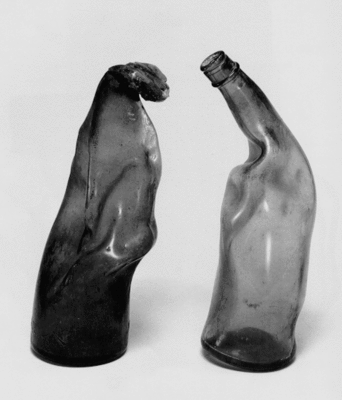
Transplant ourselves 60 years and we are currently sitting in the interregnum between the atomic bombings (on the August 6 and 9) and Japan's surrender in World War II on August 15 (Japan time).
Above is the iconic image of a kiss in Times Square when the surrender was announced. I would have felt exactly the same as those two people. Beside it is a picture of two bottles melted in the Hiroshima explosion.
Tuesday, August 09, 2005
Two tips for anyone with a casual interest in Japan
Read this really interesting article by Joichi Ito in the New York Times. Ito is a internet type rather than a journalist or an academic. He is clearly a very sophisticated communicator. This is his blog.
Last time I read something this good, it was by someone called Ayako Yoshino in the THES (the article is kept behind a subscription wall, but it is so old now that I have taken the risk of mirroring it). What both articles do well is get into the specifics of the country. They avoid the over generalised stereotyping that so often substitutes for commentary on this country. Talking of over generalised stereotyping....
Tip 2
Ignore anything written by Martin Jacques in the Guardian. God knows why they commission him. He doesn't seem to have a clue about the country. If you do read his stuff, it is a good rule of thumb to think the opposite of every other thing he says. This article by Alexander Bukh is an excellent rejoinder to one of Jacques's commentaries and he is also slapped down here, here and here.
In general, the problem with his writing is he has a completely undynamic view of Japan, with no understanding of the differences between generations and no feel for the diversity of the country. He recycles stereotypes that were probably never true and certainly are not true now. I suspect his access to real facts about the country is limited by a lack of linguistic ability and good social contacts. He tries to make up for this with broad brush strokes about the "rise of China" and the "fall of Europe" and "fall of Japan". (We could add to the long list of Jacques faults that he appears to lack a sophisticated grasp of economics.)
One of Bukh's opening paragraphs locates Jacques within a broader trend in Western coverage of Japan: "Speaking from the perspective of somebody who is based in Japan, most of the coverage seems to be focused on exploring some imaginary 'Japan' that has very little in common with the Japan that I live in and interact with on a daily basis. For me, the numerous articles that discuss Japan's 'whitewashing' of history and its relations with its Asian neighbors, while having some perceptive conclusions, tend to reflect the strong anti-Japanese bias that dominates Western perceptions of Japan and goes back to at least the Japanese defeat of Russia in the 1904-1905 war. An article by Martin Jacques published in The Guardian on April 23 is a perfect example of this trend."
Monday, August 08, 2005
Nostalgic Nihon

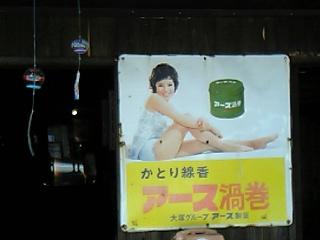

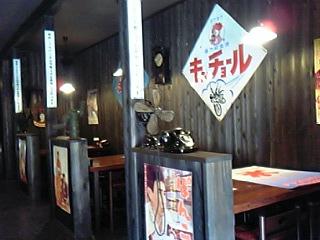
One thing we noticed during our trip of Takayama was the rise of nostalgia for twentieth century Japan. I don't remember any of this sort of thing ten years ago. Back then, bars and restaurants seemed to trade off various types of foreignness, authentic pre-modernisation Japaneseness or cutting edge modernity. This time, there were a new crop of restaurants and drinking places themed around nostalgia for 1950s and 1960s Japan. The Taisho period, the relatively liberal era which directly preceded the militarisation of pre-war Japan, is also a favourite for this kind of thing.
As I say, Takayama is full of it. We went to an izakaya and a ramen restaurant, both filled with post-war artefacts. There was also a korokke shop displaying its owners collection of 20th century stuff and I passed a shop window full of antique product signs.
You could come up with all kinds of rubbish theories as to why this kind of nostalgia is on the rise in Japan. The most obvious, which someone will no doubt churn out in a Western newspaper column sooner or later, is that the post bubble depression is engendering warm feelings for the boom days. The problem with this theory is that this new nostalgic consumerism is a shiny and polished phenomenon. These restaurants are the smartest places in town and their clients are most definitely not sacked salarymen wallowing in post bubble penury. There is a feel of carefree consumerism, piggybacking on the consumerism of a past era, about these places.
Probably as far as I can go by way of explanation is to say there are not so many barriers to this type of nostalgia in Japan nowadays and that it may appeal to younger people more than to older people. This is a bit of a simplification but the immediate postwar generations in Japan seemed not to be totally comfortable with celebrating everyday Japaneseness. They often seemed to be more interested in finding an "authentic" or "original" Japaneseness or, conversely, in experiencing some authentic, usually Western, foreignness. The third comfort area for these generations was with incredibly modern, cutting edge style.
Nowadays, younger people, who have no knowledge of Japan's post war humiliation and the discomfort with everyday Japaneseness that was associated with it, seem to be much happier to engage playfully with the everyday things of Japan's immediate past. I'm not saying that the younger generation have invented nostalgia, no doubt it existed in previous generations, but this very public and commercial delight in mass Japanese culture and ephemera seems new.
A couple of nostalgia snaps from the Takayama trip below.
1. Outside the 1960s ramen store (which only served two types because that was all that existed in those pre-ramen revolution days) a mock poster exhorting the Marxist masses to support their workers' newspaper.

2. No ersatz 1960s nostalgia here. This shop seems to have stayed the same since the immediate post war years, gone out of style and then come back in. The sign says "Oriental Curry" and the face is the Japanese equivalent of a Gollywog, an un-PC caricature of an Indian face. We bought a couple of packets of oriental curry, which the shopkeeper warned was much sweeter than more modern instant curries. I liked it.
The shopkeeper said she had recently been bombarded with requests to buy the sign and other "oriental curry" paraphernalia in her store but she had refused. The shop has even been featured on TV.

Sunday, August 07, 2005
Saturday, August 06, 2005
Koshien
The Koshien, Japan's equivalent of the University Boat Race, is on our screens at the moment.
I say it is like the Boat Race in that it is the country's main televised non-professional scholastic sports event but there are some important differences. The glaring distinction is that it is far less elite than the UK equivalent. It is not a mens' university rowing contest but a boys' high school baseball competition. All high schools in Japan can enter (if they have boys) and the pre-qualification tournaments are broadcast on local television.
It is the dream of many a young lad to play in one of the nationally televised rounds. I've just watched a very unfancied high school beat Tenri high school, one of the powerhouses, in the stage before the quarter finals. (The pic shows supporters of Tenri, a cultish religious school which uses the competition as a way of promoting itself, with purple fans behind pink hatted supporters of an unknown previous opponent.)
The play looks of a pretty high standard, although there are obviously plenty more errors than in the adult professional game. The charm, though, is in the atmospherics. The cameras constantly pan the audience to find love-lorn schoolgirls crying their eyes out because their hero is getting smashed around the ground.
This year, one of the big sports schools, a perennial player in the final stages of the event, did not take part because older boys had been bullying younger pupils and smoking. The coach admitted that he had been aware of the bad behaviour but had not taken any strong action to stop it. The head withdrew their entry, causing a bit of a stir, although I am not positive whether this was done at the sole initiative of the head or because of some outside pressure.
Thursday, August 04, 2005
Holiday postcard II
This was our normal get-up for our walks around the city. An umbrella for keeping the sun off the son, Baby Bjorn and a stand-up pram slung over my back so he would have somewhere to sit during one of our numerous visits to the local eateries:
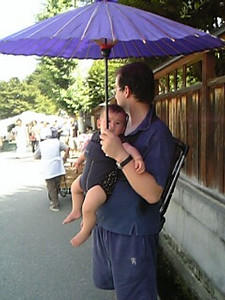

This was one of those restaurants, called "Agura". I don't think it was here when I was in Takayama. The city's tourism seems to be booming. You see many more foreign faces on the streets and the feel to the facilities is much more prosperous and new fashioned. I'm not saying the bus loads of tripping obaasan (grandmas) are gone, but they don't seem to dominate the place in the way they used to. There were always good restaurants in Takayama, but there is a new breed of establishment that doesn't rely so much on word of mouth among locals.
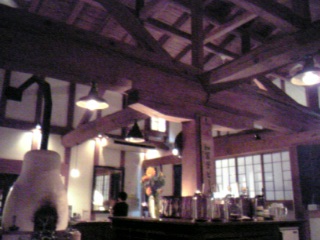
I've consolidated the posts I sent from my mobile in Takayama onto the bottom of this post and flipped around one or two of the pics. I've linked to the old comments, just in case someone is interested.
A trip down memory lane
The famous geezer with the long arms:
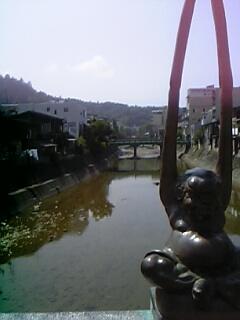
The former house of a not-so-famous geezer:

Actually, it was my old apartment (on the top floor). Met the current resident at H.'s bar. It is still a JET scheme apartment. He was a nice chap. (Old comments).
The underpass on the way from my old house to the station:
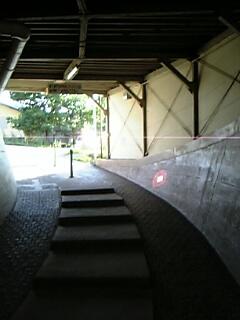
For some reason, this was a particularly nostalgia drenched spot. Perhaps because I used to have to bike through here every morning at breakneck speed in a desperate attempt to catch a hopelessly missed bus to one of my schools in the mountains. Also remember meandering through here on Fridays on my way out of town. Can't believe I spent most of my first year leaving this wonderful place for a real dive three hours South. Young love! (Old comments)
When I wasn't legging it out of town, I was often to be found in this isakaya (the Japanese equivalent of a pub). It is called "Murasaki" and is part of a chain. English readers might best think of it as a very cheap and cheerful Wetherspoons. The woman in charge on our visit this time was exactly the same person as when I was here at the start of the 1990s. She has a nice smiley face. (Old comments)
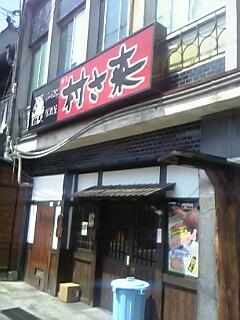
Spent a good deal of the rest of my time in Takayama at Ichii coffee shop, which is on top of a hill above the city. It has great views both of Takayama and, in the other direction, the Japanese Alps. (Old comments 1, old comments 2)
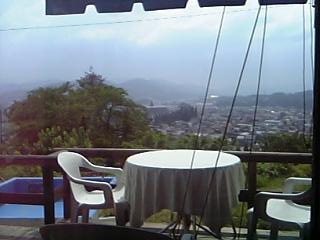
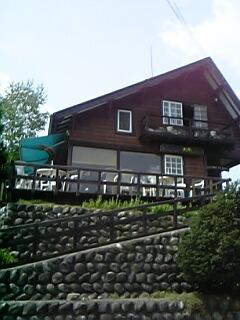
Ichii does a nice line in super cold beer, which is much needed after the hike up the hill:
George was a bit of a hit with the ladies of Hida ...
... but for the story of his visit you might want to take a look at Yobu. A. and I got in the habit of promenading up and down the riverside morning market with George in sling. The people of Hida are very friendly and the walk through the market was a constant bombardment of old women stall owners cooing over him. Only once was he upstaged, by a very classy young local girl and her super-cool traditional pram.
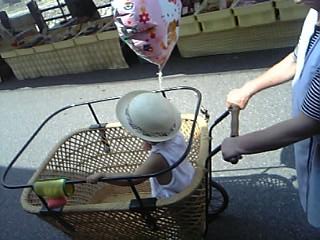
The local obaasan who was pushing her said: "These new fold-up buggies are too difficult for the likes of me." (Old comments)
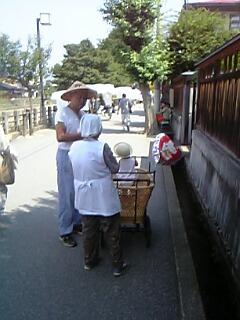


We had a great time and came back much refreshed.
Wednesday, August 03, 2005
Holiday postcard
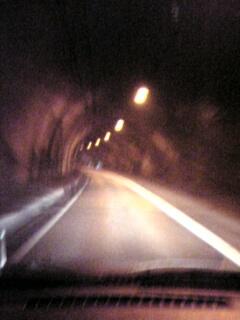
We drove over from Hiratsuka to Takayama yesterday. Takayama is where I lived when I was here ten years ago. It is a beautiful town in the mountains. For those of you who know it, we came in through Kiyomi and Nyukawa. They were not much changed.
Hiratsuka to Takayama takes about six hours by car. The last third of the journey is quite an education in civil engineering.It is not as though the first part isn't mountainous, but as you get to the centre of the main island you are dealing with hundreds of square miles of fairly formidable mountain ranges.
The road engineers here have burrowed an extraordinarily extensive network of roads straight through the sides of these mountains. There are literally hundreds of miles of tunnels,some stretching for ten or more kilometers, diving out into sunlight, and then nuzzling back underground.Some are new but some are old, narrow and dark. You feel like an automated mole driving through these endless warrens.
As we entered one of these tunnels, A. said "We've got Tanaka to thank for all of this." Tanaka is one of the two most famous Japanese post war Japanese prime ministers and his name is a byeword for corruption. But he also did some good. A. said he gave a really famous speech in which he said something like, "The tiniest hamlet in the furthest corner of this land must be able to get to the other corner. Some may ask where the money will come from but the money will come from having the gall to think such projects." (A. put on a really guttural accent because he was famously working class.)
Of course, he was right about the money following the infrastructure. I'm sure there was plenty of hubris involved and plenty of corruption but I couldn't help feeling as we drove through Tanaka's underground kingdom that I preferred politicians who got obsessed with grandiose civil engineering rather than vainglorious imperialism and militarism. That may sound very lefty of me (swords into ploughshares and all that) but of course Tanaka was very far from a lefty.


